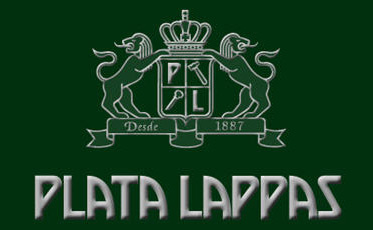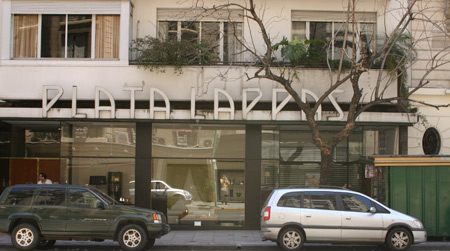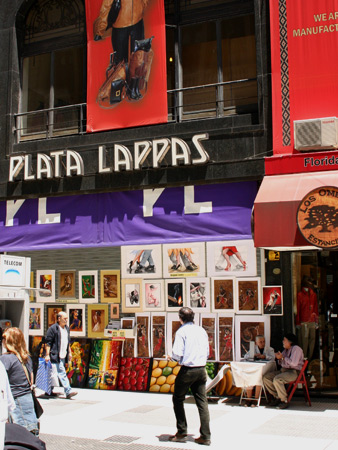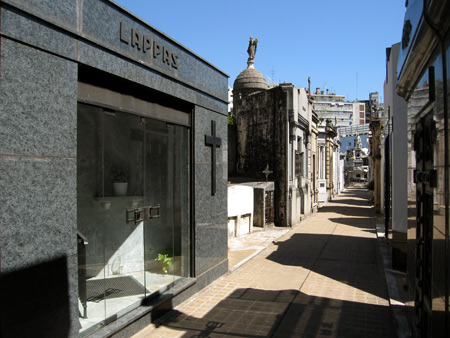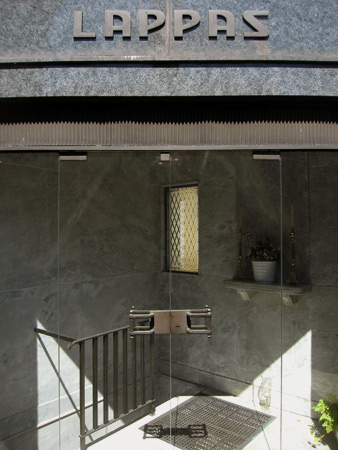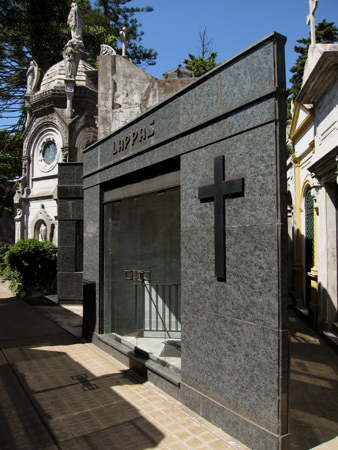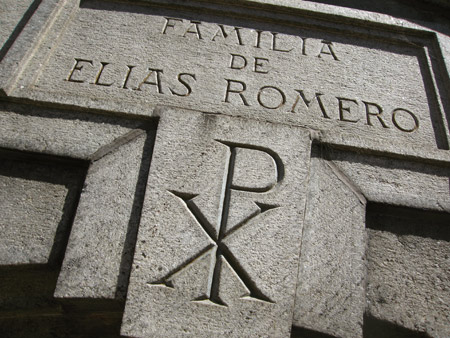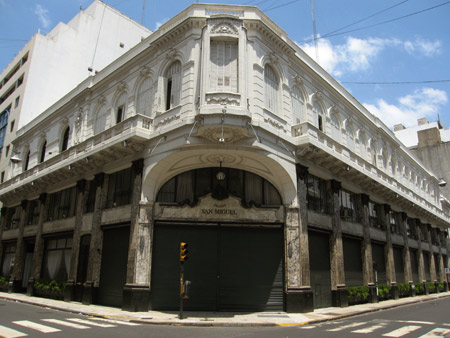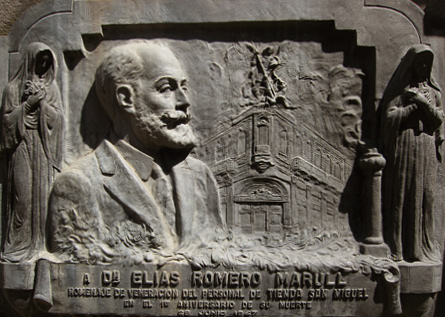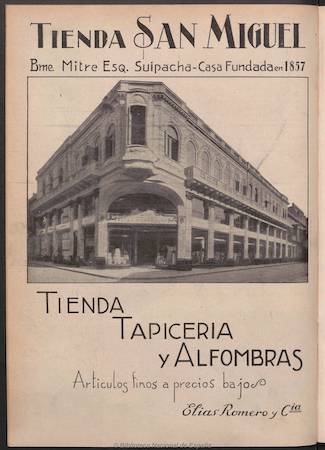Difficult to miss, this granite monster is unremarkably cold, grey & lifeless. But if the glass window behind the wrought-iron door is open, be sure to peek through… one of the most beautiful statues of Recoleta Cemetery sits inside. The interior of the mausoleum has significant water damage thanks to broken ceiling glass, but the sculpture has been spared from the elements:
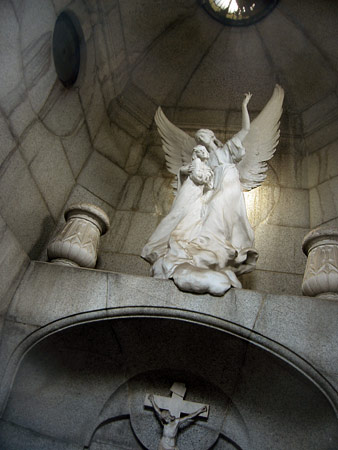
An angel with exquisite wings carries a child to heaven on a cloud. Both look completely content & offset what was a terrible tragedy for the Otamendi family. Their only daughter, Estela Matilde Otamendi, died in 1916:
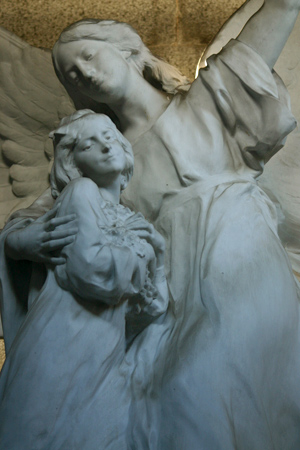
Romulo Otamendi, born in 1852, worked an engineer & was responsible for laying out a large portion of the Argentine railroad network. He was compensated with land holdings & a small town was established near the railroad station named after him. On Otamendi’s death in 1934, much of the land was willed to the national government. After decades of neglect, it was recovered & became a nature reserve in 1990. The 3,000 hectare area is about 70 km northwest of Buenos Aires, near the city of Campana, & is hoping to become the first national park in the Province of Buenos Aires.
The Otamendis spent their summers in a sumptuous estate along the Tigre Delta known as the Palacio Belgrano. Originally constructed in the 1860’s for Carlos Belgrano, brother of independence hero Manuel Belgrano, the German/Italian-influenced castle had been decorated with all the European elegance money could buy:
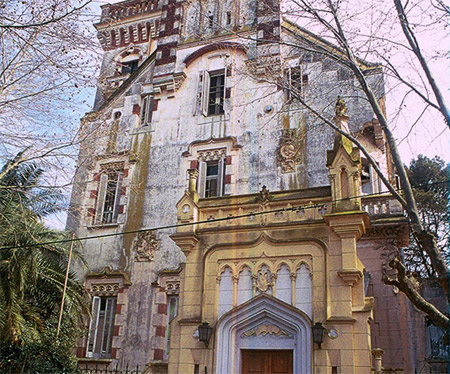
When daughter Estela passed away, the estate was donated to the local government & a shelter for girls now operates there. Above the main entrance of this mausoleum, Estela’s name figures between those of her father & mother.
[Palacio Belgrano photo courtesy of the Municipalidad de San Fernando.]
